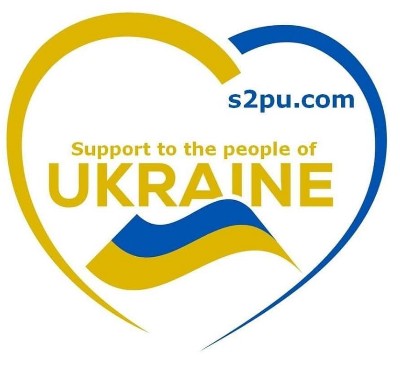The ukrainian culture
The name Ukraine first appeared in twelfth century

Ukrainian nationhood
begins with the Kyivan Rus
Ukraine's regional ethnographic cultures, not always congruent with oblast boundaries are: Donbas, Slobozhanshchyna, Zaporizhzhya, Steppes Ukraine, Poltava, Cherkasy, Polissya, Podillya, Volyn, Halychyna, Bukovyna, Transcarpathia, and Crimea. Crimean Tatar culture predominates in Crimea, and the Hutsul highlanders live in Halychyna, Bukovyna, and Transcarpathia.
Identification. Ukrainian nationhood begins with the Kyivan Rus. This Eastern Slavic state flourished from the ninth to the thirteenth centuries on the territory of contemporary Ukraine, with Kyiv as its capital. The name Ukraine first appeared in twelfth century chronicles in reference to the Kyivan Rus. In medieval Europe cultural boundary codes were based on a native ground demarcation. Ukraine, with its lexical roots kraj (country) and krayaty (to cut, and hence to demarcate), meant "[our] circumscribed land." The ethnonym Rus was the main self-identification in Ukraine until the seventeenth century when the term Ukraine reappeared in documents. This ethnonym of Rus people, Rusych (plural, Rusychi ), evolved into Rusyn , a western Ukrainian self-identification interchangeable with Ukrainian into the twentieth century. Ruthenian , a Latinization of Rusyn , was used by the Vatican and the Austrian Empire designating Ukrainians.
Location and Geography. Ukraine, Europe's second largest country during the twentieth century, occupies 232,200 square miles (603,700 square kilometers). Its main geographical features are the Polissya and Volyn northern forests, the central forest steppes, the Donetsk eastern uplands (up to 1,600 feet [500 meters] above sea level), and the coastal lowlands and steppes along the Black and Azov Seas. The Carpathian mountains in the west reach 6,760 feet (2,061 meters) at Mount Hoverla. Roman-Kosh in the Crimean peninsula reaches 5,061 feet (1,543 meters.) Alpine meadows—called polonyna in the Carpathians and iajla in the Crimea—are another interesting geographical feature.
Ukraine's climate is moderate. The yearly average temperatures range from 40 to 49 degrees Fahrenheit (6 to 9 degrees Celsius)—except for the southern steppes and in Crimea, where yearly average temperatures range from 50 to 56 degrees Fahrenheit (10 to 13 degrees Celsius).
Ukraine has twenty-four administrative units—oblasts—almost all named for their capitals. From east to west, they are Donetsk, Luhansk, Kharkiv, Poltava, Zaporizhzhya, Dnipropetrovsk, Kirovohrad, Kherson, Mykolaiv, Odessa, Cherkasy, Kyiv, Sumy, Chernihiv, Zhytomyr, Vinnytsya, Rivne, Luts'k (Volyns'ka oblast'), Khmel'nyts'kyj, Ternopil', Lviv, Ivano-Frankivs'k, Uzhhorod (Zakarpats'ka oblast'), and Chernivtsi. The Crimean oblast became an autonomous republic in 1991.
Ukraine's regional ethnographic cultures, not always congruent with oblast boundaries are: Donbas, Slobozhanshchyna, Zaporizhzhya, Steppes Ukraine, Poltava, Cherkasy, Polissya, Podillya, Volyn, Halychyna, Bukovyna, Transcarpathia, and Crimea. Crimean Tatar culture predominates in Crimea, and the Hutsul highlanders live in Halychyna, Bukovyna, and Transcarpathia.
Food in Daily Life. Ukrainians prefer to eat at home, leaving restaurants for special occasions. Meal times are from 7:00 to 10:00 A.M. for breakfast, from 12:00 noon to 3:00 P.M. for dinner or lunch, and from 5:00 to 8:00 P.M. for supper. The main meal of the day is dinner, including soup and meat, fowl, or a fish dish with a salad. Ukrainians generally avoid exotic meats and spices. A variety of soups—called borshch collectively—is traditional and symbolic, so it is never called "soup."
Menu items in restaurants are usually Eastern European. Expensive restaurants are patronized at supper time by a new breed of business executives who combine dining with professional interaction.
Food Customs at Ceremonial Occasions. Culinary traditions in Ukraine are connected with ancient rituals. The calendar cycle of religious holidays combined with folk traditions requires a variety of specific foods. Christmas Eve supper consists of 12 meatless dishes, including borshch , cabbage rolls, varenyky (known in North America as pierogi), fish, mushrooms, various vegetables, and a wheat grain, honey, poppyseed, and raisin dish called kutya . The latter dish is served only at Christmas time. On Easter Sunday food that has been blessed previously is eaten after Resurrection services. It includes a sweet bread called paska , colored eggs, butter, meat, sausages, bacon, horseradish, and garlic. On the holiday of the Transfiguration (19 August), apples and honey are blessed and eaten along with other fruits of the season. Various alcoholic drinks complement the meals. It is customary to offer a drink to guests, who must not refuse it except for health or religious reasons.
